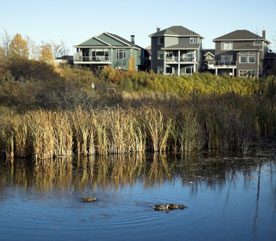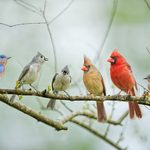Tips for Designing a Wildlife Pond
There are several key points for a successful wildlife pond.

• The pond should not be too small; about 2 × 2.5m (6 × 8ft) is a minimum size, but larger ponds are more interesting and it is easier to develop and maintain the ecological balance. An irregular, curved outline looks most natural.
• There should be a point of easy access in the form of a ‘beach’ that slopes gently down to an area of shallow water. Large stones in the water with their tops exposed allow birds to perch.
• To accommodate a wide selection of water plants, vary the pool depth. Part needs to be at least 60cm (2ft) deep for water lilies and other deep-water plants, while an underwater shelf running round part of the edge allows marginal, or shallow-water, plants to grow. These plants will also help wildlife to climb out of the pond.
• Some dense planting adjacent to the pond allows creatures to approach in safety. The perfect companion to a wildlife pond is a bog garden, and one can be added as a natural extension of the watery habitat.



